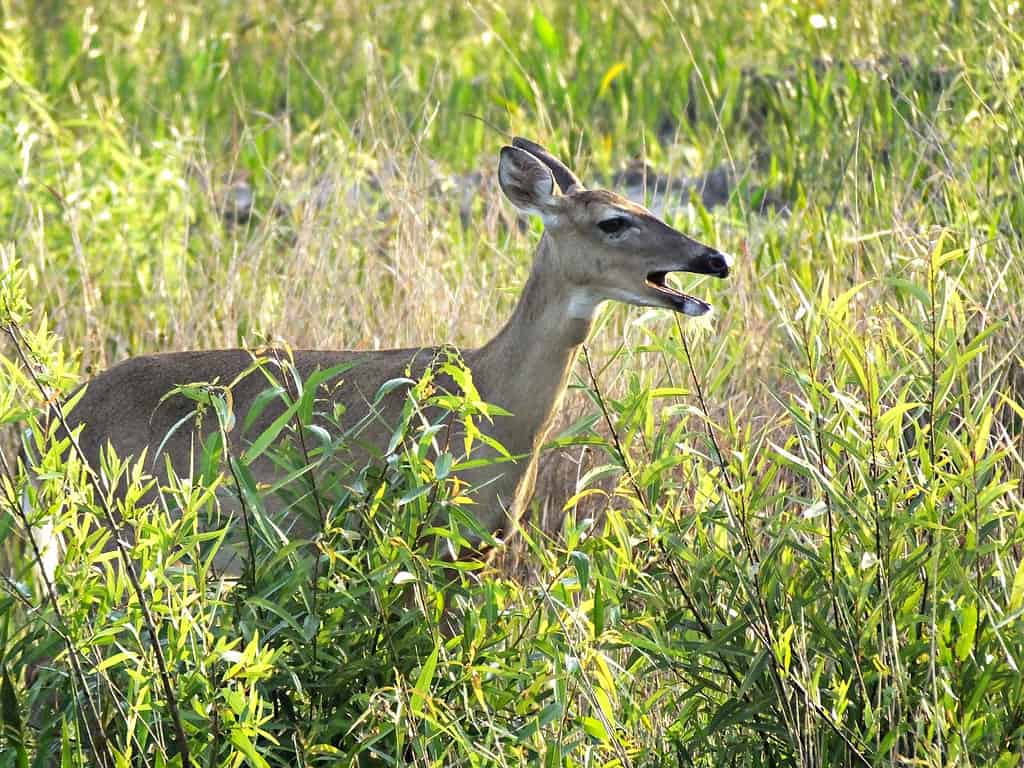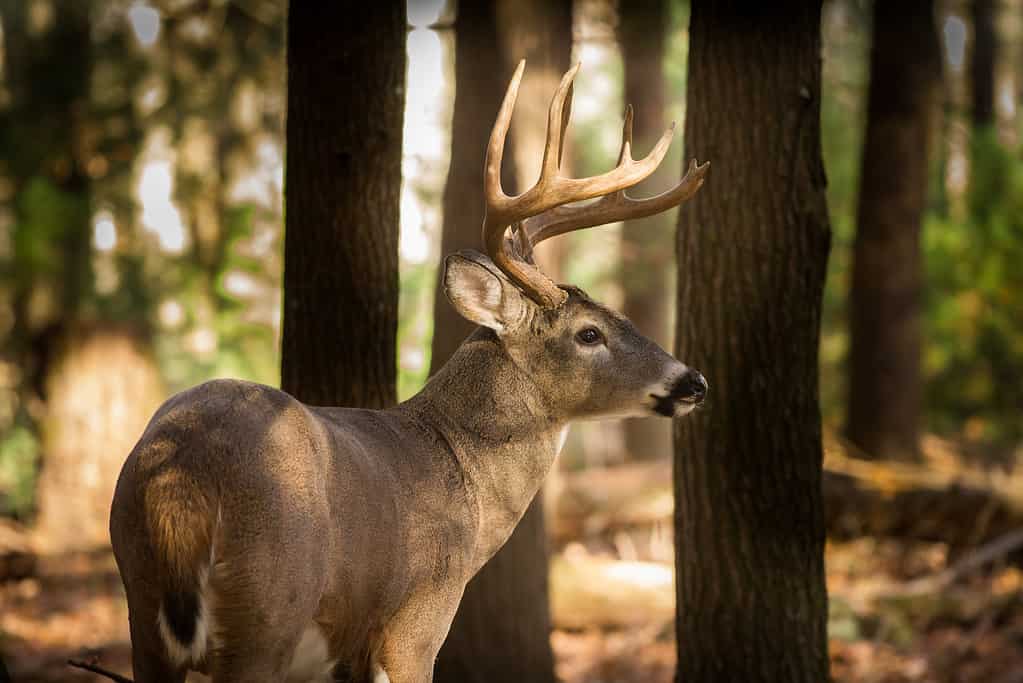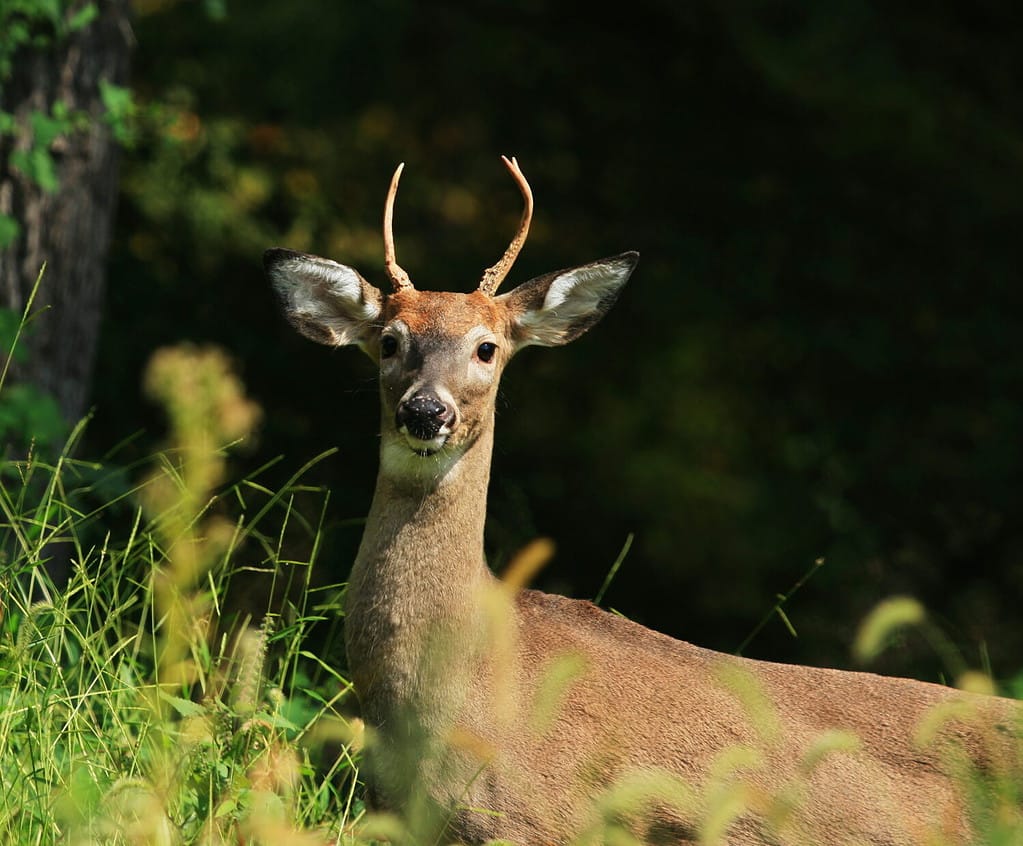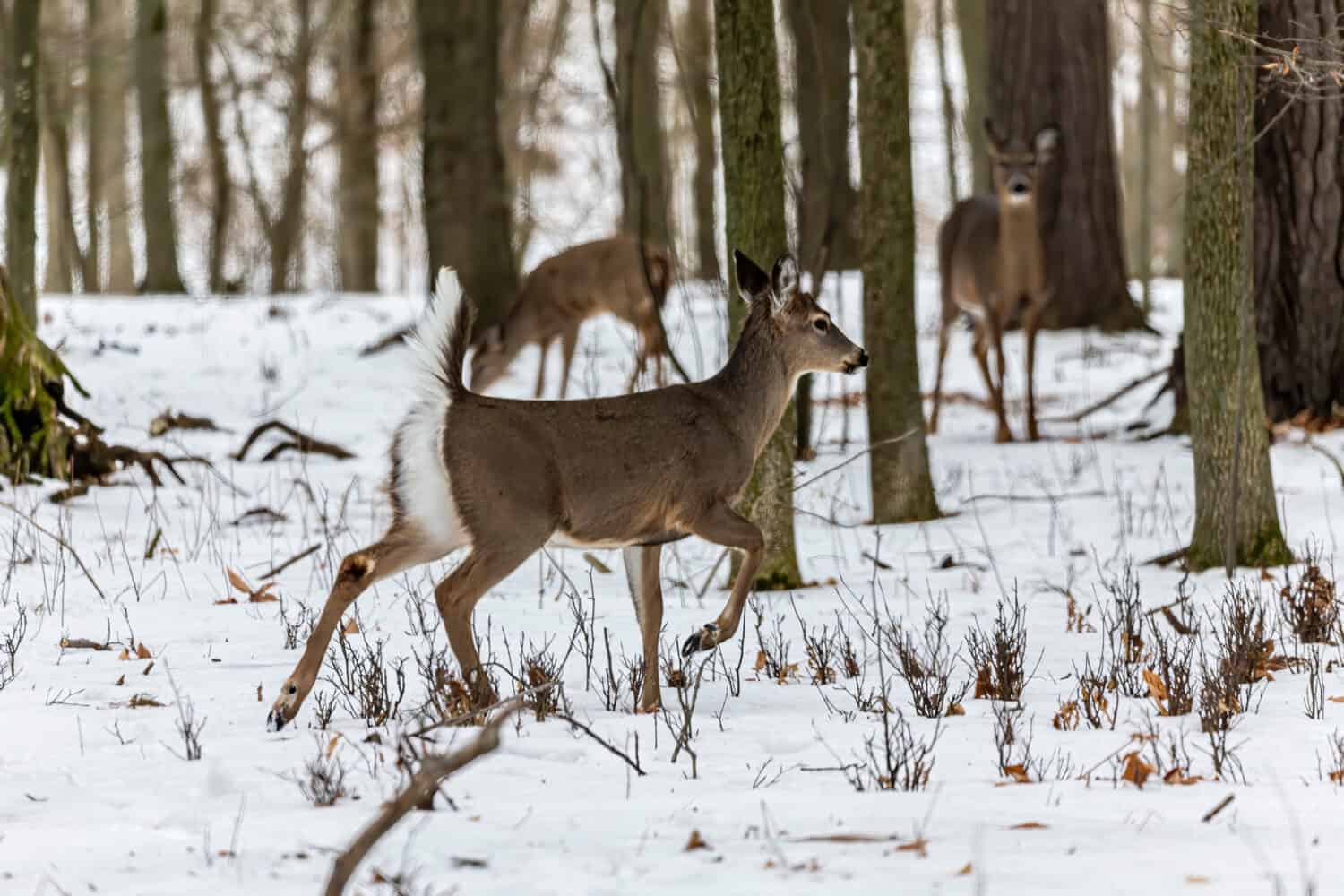Deer are a common sight across most of North America and live in every state in the United States. There are seven species of deer native to the continent, as well as several subspecies. The most common deer in the United States is the white-tailed deer, which is found in every state except for Arizona, Alaska, California, Hawaii, Nevada, and Utah.
As a result, almost everyone has seen white-tailed deer in their local woods, parks, fields, and even backyards. Adapted to rural, suburban, and urban areas, white-tailed deer can be found almost everywhere. While these deer are common, there are many things that people don’t know about them and their tendencies. Maybe you’ve seen a deer headbutting a tree, wagging its tail, or yawning. Wondering why they’re behaving this way? Here are six weird deer behaviors explained.
1. Wagging Their Tails

A white-tailed deer’s tail can be 4-14 inches long.
©Christopher Roth/iStock via Getty Images
A deer’s tail can tell you a lot about its mood. A relaxed white-tailed deer will occasionally wag its tail in a casual side-to-side motion. A relaxed, slow tail wagging is a sign the deer is calm and at ease. Tail flicking also serves as a sign of acknowledgment to other deer. A little tail wag tells other deer that nothing is wrong, and all is well, and often indicates that the deer is about to raise or lower its head because it is so unconcerned. Practically speaking, wagging the tail is also a way for deer to flick off any bugs that may be on their hindquarters.
If a deer raises its tail halfway and keeps it still, it means the deer is on alert. It may sense something is wrong, but it hasn’t yet identified if it is in danger or not. If the white-tailed deer decides it is in danger, it raises its tail all the way. This exposes the trademark white underside of its tail, which warns other deer that there is danger around. At this point, deer may also wag their tails in a manner called flagging. Tail flagging helps members of the herd find one another while they are fleeing, offering a moving sign that helps other deer locate it. Females do this more than males, to help their fawns stay with them during flight.
2. Yawning a Big Deer Yawn

White-tailed deer have 32 teeth.
©passion4nature/iStock via Getty Images
Another weird deer behavior is yawning. A yawning deer may look like it’s bored, but it’s really the opposite. Deer yawn when they are stressed and will often do so if they sense a threat. When they yawn, they will close their eyes and open their mouths. Yawning helps increase the blood flow to the head and provides more oxygen intake to the brain. This increases the level of alertness, which is necessary if a deer is going to have to evade a predator. Stress yawning is not unique to deer but is also a common behavior in dogs.
3. A Deer Headbutting a Tree

The largest white-tailed deer on record was 540 pounds.
©EEI_Tony/iStock via Getty Images
A male deer (known as a buck) confronting a tree may look like he is headbutting it, but he’s actually just rubbing his head on it. Deer stake their territories by scent marking. Scent glands on the top of a buck’s head deposit smell that tells other deer that this is his turf. In the autumn, bucks also rub on trees to remove the velvet from their antlers. Some researchers believe that aggressively rubbing against a tree can also help increase strength in the buck’s neck muscles, which can help during antler battles with other bucks.
5. Bobbing Their Heads

A white-tailed deer’s antlers grow a quarter inch per day.
©David Byron Keener/Shutterstock.com
While it may look like deer are bobbing their heads to a good song, they’re actually trying to figure something out. Deer bob their heads when they see something that confuses them. This head bobbing is usually in response to a sudden motion or object that they can’t identify.
One reason deer head bob is that they do not have great depth perception, so they move their heads around to look at an object from different angles to piece together what it is. This movement also allows them to pick up more sounds. Deer also bob their head to fake out predators, which often move at the sight of movement. By getting a predator to move, the deer gets a better grasp on what it is facing.
6. Weird Deer Eating Meat?!

White-tailed deer move more in cooler temperatures, and bed down when it is warmer.
©iStock.com/EEI_Tony
Deer are herbivores and generally eat green plants, leaves, fruit, berries, nuts, and even bark. However, the U.S. Geological Survey reports that there have been recorded instances of deer eating meat. While the action is uncommon, it is believed that they may eat protein when their calcium levels are low. Deer are not natural hunters and do not have teeth that can slice through skin. As a result, most meat-eating activities include easy meals such as bird eggs, hatchling birds, or the remains of animals left by predators. It’s definitely a weird deer behavior, but one that happens!
Thank you for reading! Have some feedback for us? Contact the AZ Animals editorial team.








